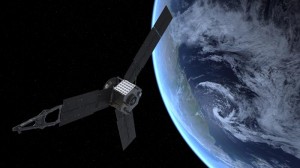On Oct. 9, NASA’s Juno spacecraft will fly past the Earth for a gravity-assist boost that will slingshot the probe onward to Jupiter, the largest planet in our solar system.
The time of closest approach is 3:21 p.m. EDT (12:21 p.m. PDT / 19:21 UTC) when Juno will pass about 350 miles over South Africa.
“While we are primarily using Earth as a means to get us to Jupiter, the flight team is also going to check and calibrate Juno’s science instruments,” said Scott Bolton of Southwest Research Institute and Juno’s principal investigator.
Arrival date
Given the gravity assist from Earth, Juno will arrive at Jupiter on July 4, 2016.
Once in orbit around Jupiter, the spacecraft will circle the planet 33 times, from pole to pole, and use its collection of nine science instruments to probe beneath the gas giant’s obscuring cloud cover.
Juno’s science team will learn about Jupiter’s origins, structure, atmosphere and magnetosphere, and look for a potential planetary core.
Spotting Juno
If you know where to look and live in the right part of the world, you will have a chance to see it through binoculars or a telescope, said Chris Peat of Heavens-Above.com.
Lucky observers who live in the extreme south-west of Africa (e.g. Cape Town) could even see it with the naked eye just before it enters the Earth’s shadow, Peat said.
At the website, you’ll find zoomable star charts and other flyby graphics.
Amateur astronomers in India may also be able to photograph Juno after shadow exit. For example, from Bangalore the range will be 9,000 kilometers after shadow exit and altitude over 70 degrees.
Can you see Juno from where you are?
Check out the Heavens-Above.com website with the Juno information at:
http://www.heavens-above.com/JunoFlyby.aspx?lat=0&lng=0&loc=Unspecified&alt=0&tz=UCT
Also, a Juno Earth flyby movie can be viewed at:
http://www.youtube.com/watch?v=HjQx2TPYz5o&feature=share&list=PL907ACC7E0581A992
By Leonard David

